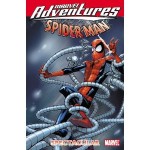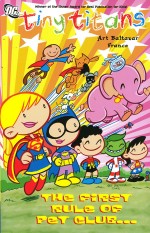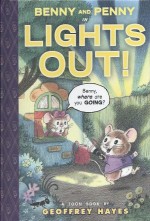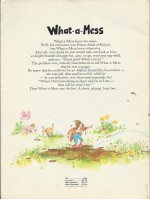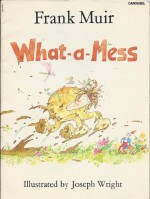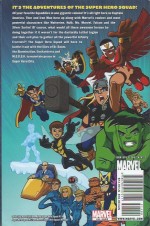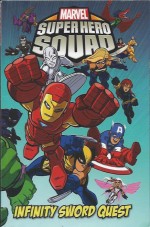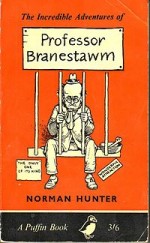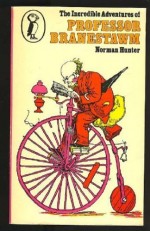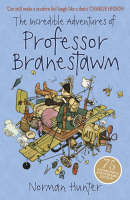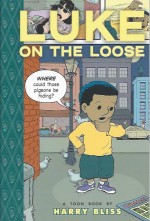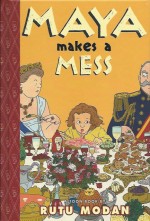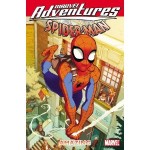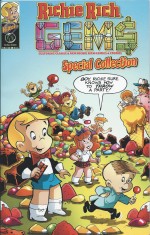
By Sid Jacobson, Ernie Colón, Ralph Newman, Lennie Herman, Warren Kremer, Sid Couchey & various (Ape Entertainment)
ISBN: 978-1-937676-27-8
Win’s Christmas Gift Recommendation: a cheap and cheerful treat for the entire family starring a true icon of kids comics… 8/10
Even if in today’s world the subtext that money fixes everything might be a little harder to swallow, the core premise of this golden classic is charmingly simple: Richard “Richie†Rich Jr. is the only child of the wealthiest man in the world, but hasn’t let the money spoil him. The lad loves simple pleasures and prefers to pal around with proper kids like Freckles and Pee-Wee Friendly rather than his obnoxious wannabe-girlfriend Mayda Munny or mean, spoiled cousin Reggie Van Dough Jr.
Moreover Richie is utterly smitten with pretty, proud pauper Gloria Glad, who spends all her time trying to convince Richie to stop showering her with imprudent, impractical presents and flashy, expensive treats.
Even so the trapping of outrageous fortunes are always there: allowing for incredible adventures and wild situations…
Once upon a time the American comicbook for younger readers was totally dominated by Gold Key, with their TV and Disney licenses, and Harvey Comics. The latter had begun in the 1941 when Brookwood Publications sold its comicbook licenses for Green Hornet and Joe Palooka to entrepreneur Alfred Harvey. Hiring his brothers Robert B. and Leon, the new publisher began making impressive inroads into a burgeoning new industry.
For nine years the company combined conventional genres and some licensed properties in a bid for the general market, but from 1950 increasingly concentrated on a portfolio of  wholesome, kid-friendly characters for early readers and fans of gentle comedy.
In the late 1940s the Harvey Brothers struck a deal with Famous Studios/Paramount Pictures to produce strips starring movie animation stars Little Audrey, Baby Huey, Herman and Katnip and Casper, the Friendly Ghost to supplement newspaper comics stars such as Blondie and Dagwood, Mutt and Jeff and Sad Sack amongst others, and eventually minted original wholly-owned stars such as Little Dot, Little Lotta and Richie Rich.
Even though the company constantly tried to diversify into mainstream genres such as horror, science fiction, western, war and superhero (producing some of the very best “forgotten classics†of the era) it was always the kids’ titles that made the most money. In 1959 the Harvey’s bought the controlling rights to their Famous Studios characters just in time for the 1960s boom in children’s television cartoons.
The result was a stunning selection of superb young reader comics starring Casper, Spooky the Tuff Little Ghost, Nightmare, The Ghostly Trio, Stumbo, Wendy, the Good Little Witch and Hot Stuff, the Little Devil all bolstered by weekly “Harveytoons†TV shows.
It was a new Golden Age for kid-appropriate funny books that lasted until declining morals, the inexorable rise of “free†entertainments such as television, games saturation and rising print costs finally forced Harvey to bow out in 1982 when company founder Alfred Harvey retired.
During that boom period, however, a new star had risen to staggering dominance.
Richie Rich first debuted as a back-up strip by Alfred Harvey and artist Warren Kremer in Little Dot #1 (September 1953) but was only given his chance at solo stardom in 1960 by line editor Sid Jacobson in 1960.
As both writer and editor, Jacobson masterminded the Harvey Comics monopoly of strips for younger American readers in the 1960s and 1970s, devising Wendy and many others whilst re-creating Richie Rich, and spinning the character off into more than 55 separate titles between 1960 and 1982. Â When the company folded he then worked the same magic for Marvel’s Star Comics imprint, where he oversaw a vast amount of family-friendly material; both self created – such as Royal Roy or the superb Planet Terry – and a huge basket of licensed properties.
In latter years he has worked closely with fellow Harvey alumnus Ernie Colón on such thought-provoking graphic enterprises as The 9/11 Report: a Graphic Adaptation in 2006 and its 2008 sequel After 9/11: America’s War on Terror, Che: a Graphic Biography and Vlad the Impaler.
Colón was born in Puerto Rico in 1931: a creator whose work has been loved by generations of readers. Whether as artist, writer, colourist or editor his contributions have benefited the entire industry from the youngest (Monster in My Pocket, Richie Rich and Casper the Friendly Ghost for Harvey Comics, and many similar projects for Marvel’s Star Comics), to the traditional comicbook fans with Battlestar Galactica, Damage Control and Doom 2099 for Marvel, Arak, Son of Thunder and Amethyst: Princess of Gemworld, the Airboy revival for Eclipse, Magnus: Robot Fighter for Valiant and so very many others.
There are also his sophisticated experimental works such as indie thriller Manimal, and his seminal genre graphic novels Ax and the Medusa Chain. Since 2005 he’s been hard at work on the strip SpyCat for Weekly World News.
Jacobson and Colón were reunited with one of their oldest projects in 2011 when Ape Entertainment relaunched and resurrected the “Poor Little Rich Kid†as contemporary kids adventure comicbook Richie Rich: Rich Rescue – which saw the beloved, whimsical child character and friends reformatted as altruistic young trouble-shooters helping the less fortunate.
Touted as a blend of “James Bond and Indiana Jones with the bank account of Donald Trump†the comic miniseries also prompted two one-shot seasonal specials (Valentine’s Day and Winter 2012) combining new material with a wealth of themed reprints from the vast archives. This slim digitally (re)coloured compilation happily re-presents them both in one single tome with a gold-plated guarantee of scintillating satisfaction…
The wealth of wholesome fun opens with the all-new ‘Unhappy Valentine’s Day’ by Jacobson & Colón, wherein nasty Reggie sabotages Gloria’s card to Richie, only to reap his usual reward of regret and recrimination courtesy of Richie’s devoted robot maid Irona, after which the vintage treasures begin with ‘Box of Chocolate’ (by Ralph Newman & Warren Kremer), wherein crafty Richie again sneaks a sumptuous gift to his disapproving girl Gloria.
‘The Great Mansion Mystery’ by Lennie Herman & Colón told of how ghostly presences in the vast Rich residence turned out be long lost – really, really lost – lovers, whilst ‘Ju$t Married!’ (Herman & Kremer) saw Richie save the day when the confetti and rice ran out at a High Society ceremonial, and ‘All That Glitters’ (Newman & Colón) again found Gloria accepting a simple gift with unsuspected cachet and value…
Richie’s ‘Electric Serenade’ (by Newman & Sid Couchey) actually charmed the stubborn little red-head, but Mayda Munny was far from happy with Richie’s expansive courtship of her rival in ‘Too Much Gloria’ (Herman & Kremer), after which it was back to business as ‘Garden Party’ by Herman & Kremer, ‘The Sound of Money’ by Newman & Colón and ‘Big Drink’ from Newman & Couchey all demonstrated the lovesick lad’s largesse but lack of restraint when shopping for the feisty Miss Glad…
Mayda once again calamitously tried to outshine her rival by becoming the ‘The Big Donator’ at a gem-studded charity event (Herman & Colón), whilst Richie was too touched by Gloria’s gift to him to reveal what truly constituted ‘Giant Jellybeans’ (Newman & Colón). The romantic reminiscences conclude with ‘Wel-Gum Home!’ by Newman & Couchey as the Lucky Lad reciprocated in his own unique style…
The Winter Special again opened with a new yarn in the spooky saga of ‘The Walking, Stalking and, Yes, Talking Snowmen’ by Jacobson & Colón wherein another of Reggie’s cruel pranks inevitably rebounded on him, after which some indoor fun in the mansion proved that there was ‘Snow Need for a Heater’ (Newman & Couchey) and ‘Snow Much Fun!’ (Newman & Colón) again displayed how imagination and improvisation were always more desirable that any expensive toy.
Newman & Kremer united to tell of ‘The Abominable Snow Plan’ of Reggie Van Dough and how Richie scotched his sneaky schemes Yeti again in ‘A Snow Thing’, after which ‘Snow Time to Play’, ‘Snow Problem’ (Newman & Colón), Kremer’s ‘Snow Problem Bonus Pin-up’ and Newman & Colón’s ‘It Seems Like Real Fun’ all demonstrate the sheer joy of combining skiing with mischief-making …
Topping off the package are four single-page gag strips from the Rich Rescue series featuring the odd inventions of on-staff boffin Professor Keenbean.
‘Keenbean’s Corner #1-4′ are by Patrick Rills & James Silvani and reveal the ups and downs of science in relation to super submarines, mouthy microchips, exo-skeleton gadgets and unsanctioned tinkering with faithful old Irona…
With contemporary children’s comics all but extinct these days, it’s lucky we have such timeless classics to draw upon and draw kids in with, and compilations like this one belong on the shelves of every funnybook-loving parent and even those still-contented couples with only a confirmed twinkle in their eyes. This clutch of classic children’s tales is a fabulous mix of intoxicating nostalgic wonder and exuberant entertainment which readers of all ages cannot fail to love…
™ and © 2012 Classic Media LLC. All rights reserved.

